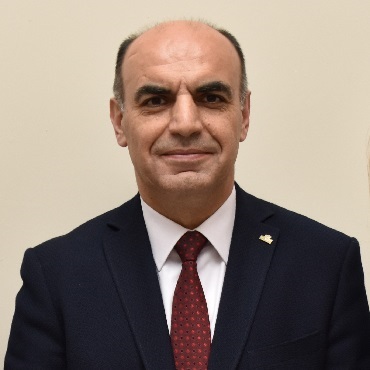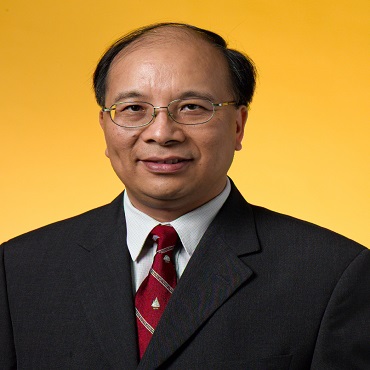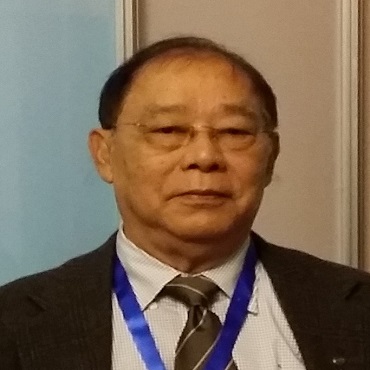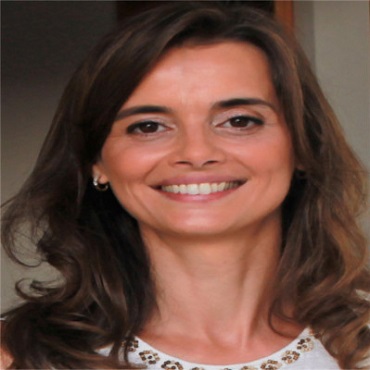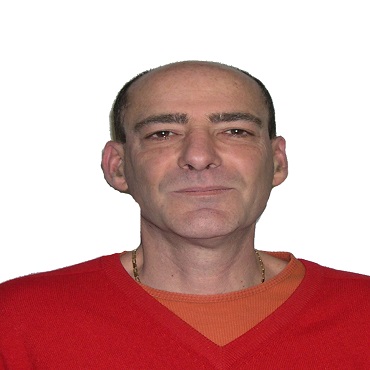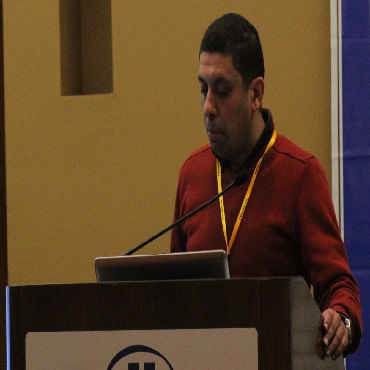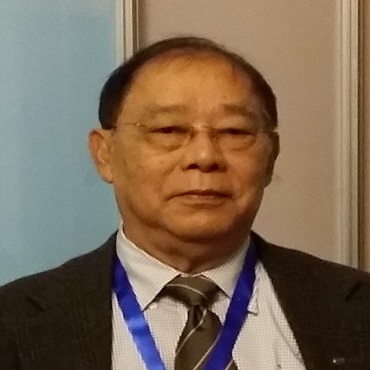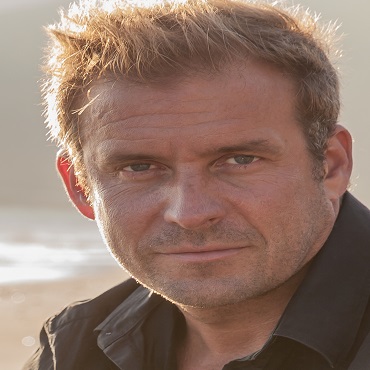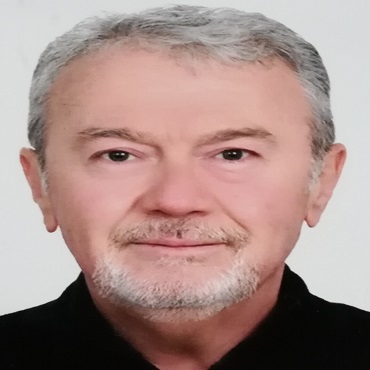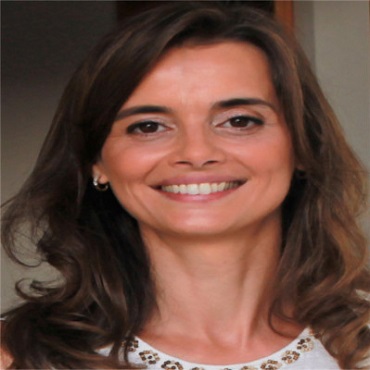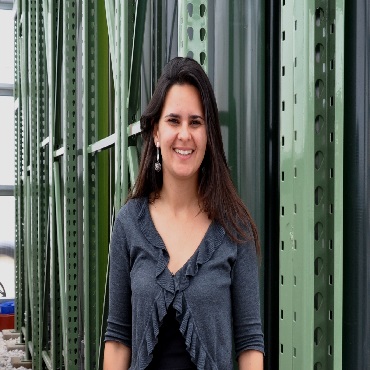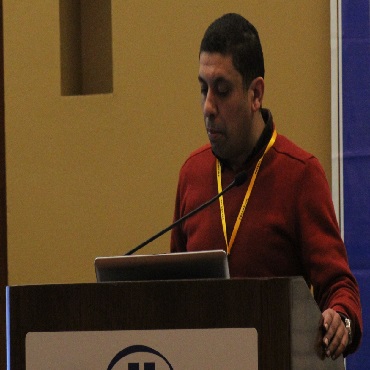
Aqua 2019
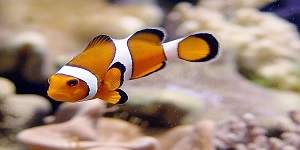
Theme: Gearing up towards an Environment-Resistant Aquaculture
The 2nd International Conference on Aquaculture & Marine Biology is delighted to welcome the participants from everywhere the planet to attend the distinguished conference scheduled during March 25-26, 2019 in Paris, France. The conference provides the global coliseum to international scholars to voice their analysis findings to the world. With representatives from all the key countries attending, the atmosphere is exciting with open and friendly interaction between attendees. This is a conference, providing a chance for the aquaculture & marine biology industry to find out regarding current and forthcoming problems, explore new developments in culture technology, and interact with others with similar interests. This conference brings along a novel and International mixture of consultants like academicians, scientists, and business professionals, general public, current and prospective fish farmers to share data and ideas regarding the development of aquaculture & marine biology. Attendees can learn about many topics relevant to aquaculture & marine biology and find out about the most recent aquaculture equipment and products by browsing the on-going Exhibition.
Anyone with an interest in aquaculture, marine science, as well as prospective growers, researchers, teachers, students or agency persons with jobs related to aquaculture & marine biology can attend the conference. The conference is additionally suited to persons who sell product or services to the aquaculture & marine biology industry.
Aquaculture Conferences | Marine Biology Conferences | Aquaculture & Marine Biology Congress | Marine Science Conferences | Aquatic Science Conferences
Session 1: Aquatic Science
Blue Revolution refers to the time of intense growth in the worldwide aquaculture industry from the mid-1960s to present. The aquaculture industry has been growing at an average rate of nine-percent a year. Worldwide aquaculture production has now reached 50 million tons, up from two million in 1950. Aquatic Science is the multidisciplinary study of aquatic systems, encompassing both freshwater and marine systems. Scientific investigations within this field often examine the human impact on and interaction with aquatic systems and range in scale from the molecular level of contaminants to the stresses on entire ecosystems.
Aquaculture Conference | Marine Biology Conference | Aquaculture Meetings | Aquaculture & Marine Biology Conference | Fisheries Conference | Marine Science Conference | Aquatic Science Conference | Fisheries Science Meetings
Session 2: Aquaculture Modelling and Technologies
Aquaculture modelling is an integral part of what we do. We believe that applying dynamic models to aquaculture is the future. The assessment of environmentally sustainable carrying capacity for aquaculture poses a major challenge for stakeholders, water managers regulators and associated industries.
Aquaculture Conference | Marine Biology Conference | Aquaculture Meetings | Aquaculture & Marine Biology Conference | Fisheries Conference | Marine Science Conference | Aquatic Science Conference | Fisheries Science Meetings
Session 3: Aquaponics
Aquaponics refers to any system that combines conventional aquaculture (raising aquatic animals such as snails, fish, crayfish or prawns in tanks) with hydroponics (cultivating plants in water) in a symbiotic environment. In normal aquaculture, excretions from the animals being raised can accumulate in the water, increasing toxicity. In an aquaponic system, water from an aquaculture system is fed to a hydroponic system where the by-products are broken down by nitrifying bacteria initially into nitrites and subsequently into nitrates, which are utilized by the plants as nutrients, and the water is then recirculated back to the aquaculture system.
Aquaculture Conference | Marine Biology Conference | Aquaculture Meetings | Aquaculture & Marine Biology Conference | Fisheries Conference | Marine Science Conference | Aquatic Science Conference | Fisheries Science Meetings
Session 4: Aquaculture for Food Security & Nutrition
Aquaculture Nutrition provides a global perspective on the nutrition of all cultivated aquatic animals. Fish are consumed as food by many species, including humans. It has been an important source of protein and other nutrients for humans throughout recorded history. Health experts have long touted the nutritional benefits of fish: These sea creatures rank high on lists of the best sources of heart-healthy omega-3 fatty acids, high-quality protein, metabolism-friendly selenium, energy-boosting Vitamin B12, and inflammation-fighting Vitamin D. Omega-3s are essential nutrients that help ward off heart disease, diabetes, and metabolism-slowing inflammation, and they’re primarily found in fish.
Aquaculture Conference | Marine Biology Conference | Aquaculture Meetings | Aquaculture & Marine Biology Conference | Fisheries Conference | Marine Science Conference | Aquatic Science Conference | Fisheries Science Meetings
Session 5: Coastal & Marine Aquaculture
Marine aquaculture refers to the culturing of species that live in the ocean. Marine aquaculture can take place in the ocean (that is, in cages, on the seafloor, or suspended in the water column) or in on-land, manmade systems such as ponds or tanks. Recirculating aquaculture systems that reduce, reuse, and recycle water and waste can support some marine species.
Aquaculture Conference | Marine Biology Conference | Aquaculture Meetings | Aquaculture & Marine Biology Conference | Fisheries Conference | Marine Science Conference | Aquatic Science Conference | Fisheries Science Meetings
Session 6: Aquatic Animal Health & Hygiene
Aquaculture is the fastest growing sector of animal protein production and now accounts for 47-50 percent of the world's aquatic animal food supply. Monitoring and management of aquatic animal health is important in many situations including the aquaculture industry, in ornamental species and also for wild populations of fish and shellfish. Health management is a critical issue in the aquaculture industry, as an intensive culture of animals and plants (both on land and in the water) can increase the likelihood of disease.
Aquaculture Conference | Marine Biology Conference | Aquaculture Meetings | Aquaculture & Marine Biology Conference | Fisheries Conference | Marine Science Conference | Aquatic Science Conference | Fisheries Science Meetings
Session 7: Fisheries Biology
The primary goal of Fisheries conservation is to restore fish populations that have been eliminated because of pollution or habitat destruction. Fisheries management draws on fisheries science in order to find ways to protect fishery resources so sustainable exploitation is possible. Modern fisheries management is often referred to as a governmental system of appropriate management rules based on defined objectives and a mix of management means to implement the rules, which are put in place by a system of monitoring control and surveillance.
Aquaculture Conference | Marine Biology Conference | Aquaculture Meetings | Aquaculture & Marine Biology Conference | Fisheries Conference | Marine Science Conference | Aquatic Science Conference | Fisheries Science Meetings
Session 8: Marine Biology and Coast Conservation
Marine biotechnology is a growing field comprising marine bio-medicine including pharmaceuticals discovery, materials technology, bio remediation, marine biomedical model organism, genomics, bioinformatics and molecular genetics. The prime motivation for this discipline is clearly derived from the enormous biodiversity and genetic life in sea.
Aquaculture Conference | Marine Biology Conference | Aquaculture Meetings | Aquaculture & Marine Biology Conference | Fisheries Conference | Marine Science Conference | Aquatic Science Conference | Fisheries Science Meetings
Session 9: Advances in Seafood Processing
Seafood processing uses almost all the processing methods available to the food industry. The most widely used methods to preserve fish involve the application of low temperatures. Spoilage can be caused by the metabolic activity of microorganisms, endogenous enzymatic activity and by the chemical oxidation of lipids. Chemical oxidation of lipids is one of the most important spoilage mechanisms, especially in fatty fish. Contamination of seafood by chemicals, marine toxins and microbiological hazards can be high. Preâ€harvest and postâ€harvest handling of fish affects its quality. From the safety point of view, processing can remove or eliminate pathogenic bacteria making seafood safer for consumption. Freshness and quality of seafood is assessed using sensory, microbiological and chemical methods.
Aquaculture Conference | Marine Biology Conference | Aquaculture Meetings | Aquaculture & Marine Biology Conference | Fisheries Conference | Marine Science Conference | Aquatic Science Conference | Fisheries Science Meetings
Session 10: Open Ocean Aquaculture
Open ocean aquaculture also known as offshore aquaculture, is an emerging approach to mariculture or marine farming where fish farms are moved some distance offshore. The farms are positioned in deeper and less sheltered waters, where ocean currents are stronger than they are inshore. Offshore aquaculture provides more space where aquaculture production can expand to meet the increasing demands for fish.
Aquaculture Conference | Marine Biology Conference | Aquaculture Meetings | Aquaculture & Marine Biology Conference | Fisheries Conference | Marine Science Conference | Aquatic Science Conference | Fisheries Science Meetings
Introduction:
Aquaculture is the fastest-growing food production system in the world due to the lack of naturally available varieties of fisheries harvested in natural environments. The increasing awareness of the health benefits and nutritional value associated with seafood has accelerated its consumption. Aquatic products, especially farmed salmon and shrimps, are highly nutritious sources of food, consisting of important proteins, vitamins A, B, D, and Niacin, minerals like iodine, iron, phosphorus, and zinc. These foods also have a significant source of Omega-3 fatty acids such as docosahexaenoic acid (DHA) and eicosapentaenoic acid (EPA).
Global Aquaculture:
As per the recent reports, 35 countries produced more farmed than wild-caught fish in 2014. This group of countries has a combined population of 3.3 billion, or 45 percent of the world’s population. Countries in this group include five major producers, namely, China, India, Viet Nam, Bangladesh, and Egypt. Global aquaculture production is dominated by Asia (89 percent); China alone accounts for 62 percent.
Aquaculture in USA:
Marine aquaculture in the United States contributes to seafood supply, supports commercial fisheries, restores habitat and at-risk species, and maintains economic activity in coastal communities and at working waterfronts in every coastal state. In the United States, marine aquaculture production increased an average of 3.3 percent per year from 2009-2014, however, globally, the U.S. remains a relatively minor aquaculture producer. According to the most recent Fisheries of the United States, the U.S. ranks 16th in aquaculture production. Although a small producer, the United States is a major player in global aquaculture. The nation supplies a variety of advanced technology, feed, equipment, and investment capital to other producers around the world.
Aquaculture in Europe:
European aquaculture is stagnating by contrast with increasing rates of aquaculture production at world level. To try to dampen this trend, the Commission published two communications with strategies for developing European aquaculture, one in 2002 and another in 2009. The 2002 strategy failed to increase European production, while the global economic crisis has hit the aquaculture market and industry. This led to the publication in 2013 of a third Commission communication, aimed at achieving the sustainable development of EU aquaculture and proposing strategic guidelines. The main aquaculture producers among the EU Member States are Spain (22%) France (17%), the United Kingdom (16%), Italy (13%) and Greece (8.5%), which together accounted for around 77% of total aquaculture production in 2011. However, in terms of the value of production, the UK is the leading producer (21%), followed by France (19%), Greece (13%) and Spain (12%). Bivalve molluscs (mussels, oysters and clams) are dominant in Spain, France and Italy. The UK produces mainly salmon, while Greece produces mainly sea bass and sea bream.
Aquaculture in Asia:
The Asia-Pacific region has taken a step forward in the development of a coordinated strategy and action plan that will lead to the sustainable intensification of aquaculture. Aquaculture is a critical sector in this region which presently supplies more than 90 percent of world production. In total, aquaculture is responsible for more than half of all fisheries products we consume, and demand for aquaculture products is expected to increase. While Asia-Pacific’s aquaculture outputs help nourish the world, they are also responsible for more than 20 percent of total protein intake of people living within the region. However, as it is the most populous region of the world, and with heavy demands on natural resources, Asian aquaculture will face great challenges to sustain its growth and meet the increasing demand for fish inside and outside the region. It is estimated that fish consumption in Asia and the Pacific will increase by 30 percent by 2030 and aquaculture production may need to increase by 50 percent during that time to meet increased global demand for fish.
Aquaculture in Middle East:
Fisheries and aquaculture production in the Middle East is relatively small and remains under developed. Production from the region amounts to only 2% of the total world production. Fish production in the Middle East has gradually been increasing at a growth rate of 16%. Egypt is the biggest producer in both capture fisheries and aquaculture, supplying 40% of the total production in the Middle East. As in the rest of the world, aquaculture’s contribution to the Middle East’s total production has grown. This trend is stronger in the Middle East than in many other parts of the world. Yemen and Oman, which produce 6% and 5% of the total fisheries production in the region, are the leading exporting nations in the Middle East by volumes.
Aquaculture in France:
Aquaculture in France has an important tradition and history. France was one of the pioneers in Europe in the development of research and technology which led to the growth of the industry in general. France is the second largest producer in Europe with a total aquaculture production of 237 451 tonnes in 2007 and €545 million in value. The greatest part of French aquaculture is the production of shellfish (190 000 tonnes) and finfish (55 000 tonnes), of which marine aquaculture is the smallest part at 9.000 tonnes. Marine aquaculture in France has stagnated over the past 5 years due to the constraints on sites and the relatively higher cost of production of farms in relation to competition from Greece and Turkey. There are approximately 30 production units operating in France. The marine aquaculture industry in France is still very fragmented with 40 individual companies occupying 46 production sites, including hatcheries and or on-growing units. There is only one company with an annual production of more than 1000 tonnes and two companies with a production between 500 and 1000 tonnes. There are eight hatcheries operating in France, with an annual production of 34 420 million European seabass and 26 740 million gilthead seabream in 2007. Close to 70 percent of juveniles production is exported mainly to Greece and Spain.
The aquaculture sector is facing a lot of challenges, such as impact of climate change and variability, urbanization and related social and economic changes. Thus the only way to meet the increasing demand for fish is to promote sustainable intensification of aquaculture, while ensuring environmental sustainability, which means “to produce more with less” by increasing the productivity and efficiency in aquaculture production with reduced consumption of resources and mitigating negative environmental and social impacts.
Global Aquaculture & Marine Biology Universities:
- University of Stirling, UK
- University of Bergen, Norway
- Ghent University, UK
- University of Cadiz, Spain
- Agricultural University of Norway, Norway
- Wageningen University, Norway
- State University of Ghent, Belgium
- Oregan State University, USA
- Memorial University of Newfoundland, Canada
- Malaspina Universitye, Canada
- Brunswick Community College, USA
- Delaware State University, USA
- Hofstra University, USA
- Humboldt State University, USA
- Kentucky State University, USA
- Mansfield University, USA
- Chulalongkorn University, Thailand
- Flinders University, Australia
- Shanghai Fisheries University, China
- National Fisheries University, Japan
- Ocean University, China
- Nagasaki University, Japan
- Hokkaido University, Japan
- Heriot-Watt University, UK
- James Cook University, Australia
- University of Tasmania, Australia
- Deakin University, Australia
- Northern Territory University, Australia
- Rhodes University, South Africa
- Shanghai Ocean University, China
- Kyoto University, Japan
- Ehime University, Japan
- Kagoshima University, Japan
Global Aquaculture & Marine Biology Research Institutes:
- The French Research Institute for Exploitation of the Sea, France
- National Institute for Agricultural Research – INRA, France
- Andalusia Centre for Marine Science and Technology, Spain
- Danish Institute of Aquaculture Technology(DIAT), Denmark
- Sea Fisheries Department, Belgium
- Fisheries Research Services Marine Laboratory, UK
- Danish Institute for Fisheries Technology and Aquaculture(DIFTA), Denmark
- Danish Institute for Fisheries Research(DIFRES), Denmark
- Canary Institute of Marine Sciences, Spain
- Netherlands Institute for Sea Research, The Netherlands
- Nordic Fisheries Institutes, Norway
- Norwegian Institute of Fisheries & Aquaculture, Norway
- NRC Institute for Marine Biosciences, USA
- Deep Bay Marine Field Station, Canada
- Oceanic Institute, USA
- NTNU Centre of Fisheries and Aquaculture (SeaLab), USA
- American Institute of Fishery Research Biologists (AIFRB), USA
- Laboratory of Aquaculture & Artemia Reference Center, USA
- Provasdi-Guillard National Centre for Culture of Marine Phytoplankton (CCMP), USA
- Bureau of Fisheries and Aquatic Resources, Philippines
- Central Institute of Brackish Water Aquaculture, India
- Central Institute of Fisheries Technology, India
- Central Marine Fisheries Research Institute, India
- Fisheries Research and Development Corporation, Australia
- Global Ocean Ecosystem Dynamics, Chile
- Korea Institute of Maritime and Fisheries Technology, South Korea
- National Fisheries Research & Development Institute, South Korea
Global Aquaculture & Marine Biology Societies:
- World Aquaculture Society, USA
- European Aquaculture Society, Europe
- American Fisheries Society, USA
- U. S. Aquaculture Society, USA
- National Aquaculture Association, USA
- Asian Fisheries Society, Malaysia
- Aquaculture Association of Canada, Canada
- Aquaculture Association of S. Africa, South Africa
- Brazilian Aquaculture Society (AQUABIO), Brazil
- Indonesian Aquaculture Society, Indonesia
- Society of Aquaculture Professionals, India
- Malaysian Fisheries Society, Malaysia
- Egyptian Aquaculture Society, Egypt
- Spanish Aquaculture Association (SEA), Spain
Funding Agencies:
- Food and Agriculture Organization
- National Oceanic and Atmospheric Administration
- PROFISH
- WorldFish
- European Maritime and Fisheries Fund
References:
https://www.fisheries.noaa.gov/national/aquaculture/global-aquaculture
https://www.fisheries.noaa.gov/national/aquaculture/us-aquaculture
http://www.europarl.europa.eu/factsheets/en/sheet/120/european-aquaculture
https://thefishsite.com/articles/asiapacific-begins-15-year-sustainable-aquaculture-action-plan
https://thefishsite.com/articles/fao-report-fisheries-and-aquaculture-markets-in-the-middle-east
http://www.fao.org/in-action/globefish/fishery-information/resource-detail/en/c/338542/
https://thefishsite.com/articles/marine-finfish-production-in-france-italy
- Aquatic Science
- Aquaculture Modelling and Technologies
- Aquaponics
- Aquaculture for food security & nutrition
- Coastal & Marine Aquaculture
- Aquatic Animal Health & Hygiene
- Fisheries Biology
- Marine biology and coast conservation
- Advances in Seafood Processing
- Open Ocean Aquaculture
- Journal of Marine Biology & Oceanography
9 Organizing Committee Members
19 Renowned Speakers
Daniel Benetti
University of Miami
USA
Alfredo Olivera Galvez
Federal Rural University of Pernambuco
Brazil
Haissam Jijakli
University of Liege
Belgium
Nyan Taw
Shrimp Aquaculture Consultant
Malaysia
Meric Albay
Istanbul University
Turkey
Dan Richardson
Born Free Foundation
UK
Galina Iozepovna Pronina
All-Russian Research Institute of Irrigation Fish Breeding
Russia
Ertan Taskavak
Ege University
Turkey
Ana Marta Gonçalves
University of Coimbra
Portugal
Pierre Raulier
University of Liege
Belgium
Maria Carmen Ceron Garcia
University of Almeria
Spain
Danielli Matias de Macedo Dantas
Rural Federal University of Pernambuco
Brazil
Romulo Araoz
French National Centre for Scientific Research
France
Icaro Gomes Antonio
State University of Maranhao
Brazil
Sidi Imad Cherkaoui
Moulay Ismail University
Morocco
Khairul Syahputra
University of Copenhagen
Denmark
Carolina Rocha
University of Coimbra
Portugal
Huria Marnis
University of Copenhagen
Denmark
Shalini Singh
University of the South Pacific
Fiji



